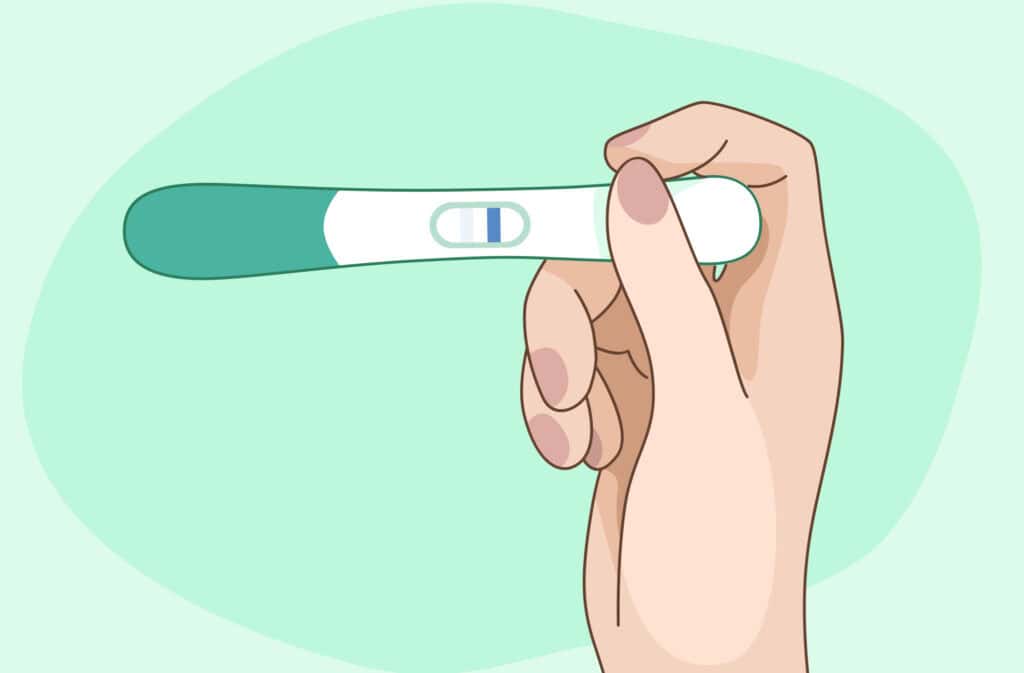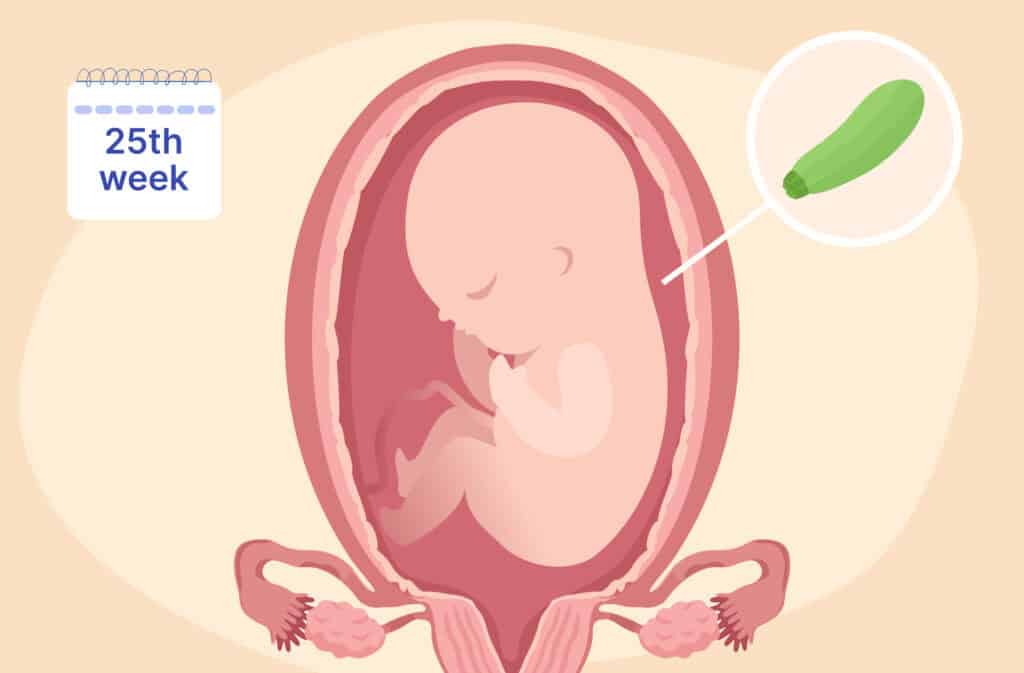Femia > Health Library > Getting Pregnant > Trying to conceive > Faint line on pregnancy test: What it means and what to do next
Faint line on pregnancy test: What it means and what to do next

- Updated Feb 18, 2025
- Published
CRAFTED BY HUMAN
Crafted by human At Femia, we provide accurate and up-to-date information at every stage of your journey, from trying to conceive, pregnancy and postnatal support. All content is created by a real person based on in-depth research and own professional experience. Femia ensures that you will receive expert advice, strict accuracy and a personalized approach from our authors/medical experts. Learn more about our editorial policy.
FACT CHECKED
Fact checked At Femia Health, we maintain the highest standards of editorial excellence in delivering content focused on helping you conceive, guiding you through pregnancy, and supporting you postpartum. Explore our content review principles to learn how we ensure the accuracy and quality of our health and lifestyle tips for every stage of your journey.
- A faint line on a pregnancy test usually means you’re pregnant, though it is possible to get a false positive result on rare occasions.
- A faint line could be an indication of a chemical pregnancy, also known as a very early miscarriage.
- Waiting until the first day of your missed period before testing can reduce the chance of a false result.
- If you got a faint positive, take another pregnancy test in two days to confirm the results.
An inconclusive pregnancy test is incredibly frustrating whether or not you’re hoping for a positive result. You desperately want to know whether you’re pregnant, only to end up with a confusing result. What does a very faint line on a pregnancy test mean? If the line is very faint, are you pregnant or not?
While it may not be the answer you’re hoping for, the best thing to do is take another test tomorrow morning and hope for clear results. In this guide, we’ll cover what faint positive lines mean and how to avoid them. We’ll answer questions like, “I got a very faint line on a pregnancy test; what does it mean?” and “How faint can a positive pregnancy test be?”
Use Femia’s easy-to-use ovulation tracker, symptom log, and daily insights
to understand your fertility better and increase your chances of conception
What does a faint line on a pregnancy test mean?
No matter how faint, a positive line on a pregnancy test usually means you’re pregnant. Pregnancy tests detect the hormone human chorionic gonadotrophin (hCG), which starts producing around six days after fertilization. For the faint pregnancy test line to appear, the test must have detected hCG.
hCG levels rise rapidly in early pregnancy, and a faint line could indicate that you tested too early and your hCG levels are still low. Though some tests claim to give accurate results before your missed period, tests are more reliable when you wait until the first day of your missed period.
👉Find out more: Why do you have cramps but no period: Pregnancy or something else?
Faint positive vs. evaporation line
You may have heard faint positives could be evaporation lines, but this is not strictly true. While evaporation lines can appear on pregnancy tests as the urine dries, it’s unlikely this would be precisely where the pregnancy result line is supposed to be.
It’s also worth noting the evaporation lines don’t appear on a test unless the urine has dried. If you read the instructions, tests are usually only considered accurate within ten minutes of testing. There shouldn’t be an evaporation line within ten minutes of testing, so it shouldn’t be possible to confuse a faint positive with an evaporation line if you take the test correctly.
Possible reasons for a faint positive pregnancy test
Testing too early
hCG levels start increasing around six days after fertilization. Your hCG levels will double every two to three days during early pregnancy, but testing too soon could lead to inaccurate test results. Generally, your hCG levels are high enough to detect by the first day of your missed period, which is why it’s vital to wait until that day before taking a pregnancy test. Testing too soon could mean the test is unable to pick up your low hCG levels, leading to inaccurate results.
Diluted urine
Most home pregnancy tests suggest you test with your first pee of the day. This is because your morning urine is likely to be stronger and less diluted than urine later in the day. Diluted urine can stop the test from producing accurate results.
Evaporation lines
Evaporation lines can appear on the test once your urine has dried. It’s generally not possible to confuse a faint positive with an evaporation line because you have to read the test within ten minutes (or, thereabouts, check the manufacturer’s instructions) for an accurate result. When the urine dries, the test may give inaccurate results.
Fertility medicines
Some fertility medicines can impact your results. If your fertility medication contains hCG, this could lead to a false positive pregnancy test result. Your fertility doctor will be your best source of advice on this matter.
Chemical pregnancy
Unfortunately, a faint line on a pregnancy test could be a sign of a very early miscarriage (also known as a chemical pregnancy) and falling hCG levels. A chemical pregnancy is a miscarriage that occurs within the first five weeks. Most miscarriages occur during the early weeks of pregnancy. Most couples who experience very early miscarriages go on to have successful pregnancies. The emotional impact of a miscarriage should not be understated, so reach out for support from your loved ones and support network.
Expired or faulty test
Though rare, pregnancy tests can fail. An expired or faulty test might produce a very faint positive line, a pregnancy test faint second line (also known as a control line), or no control line. A faint positive from a faulty test is rare, but it can happen, which is why it’s always necessary to retake a pregnancy test after an inconclusive result.
Use Femia’s easy-to-use ovulation tracker, symptom log, and daily insights
to understand your fertility better and increase your chances of conception
How faint can a positive pregnancy test be?
The line can be very faint and still indicate a positive pregnancy. The lines vary between brands, so reading the instructions carefully before taking the test is essential. Some brands may have lighter result lines than others, but the instructions will give clear examples of what to expect.
Some pregnancy tests use pink dye, and others use blue. Though both tests will likely claim similar results, many users find the blue dye tests to give ambiguous and difficult-to-read results. Some women opt for digital tests that give written results as “Pregnant” or “Not pregnant,” which takes some of the stress out of the results. A 2013 study published in Expert Opinion on Medical Diagnostics found that women found digital test results easier to understand.
The sensitivity varies between different tests, and some are better able to detect lower levels of hCG. However, even the tests that claim to detect pregnancy sooner will be most accurate if you wait until the day your period is due. A 2015 study published in Clinical Chemistry and Laboratory Medicine found that pregnancy tests weren’t always as sensitive as manufacturers claimed.
👉Find out more: Discharge before period vs early pregnancy: How to tell the difference
What to do if you get a faint positive
A faint pregnancy line test can be very frustrating, especially when you’re desperate to know whether you’re pregnant. Here’s what you need to do if you get a faint positive on a pregnancy test:
Retest
Take another pregnancy test. Wait until the following morning to ensure your urine is undiluted and strong enough to give a clear result. Though it can be tempting to repeat the test immediately, you’ll likely end up with hard-to-read results again. It’s worth waiting the extra day for a final answer.
When to see a doctor
If you’re anxious to know whether you’re pregnant, you could make an appointment to see your doctor. However, the urine pregnancy tests at your doctor’s are just like the tests you have at home. Your doctor can run an hCG blood test, but the results usually take a few days to come back, so it’s likely to take longer than testing yourself again the following day.
If you’ve had a faint positive pregnancy test but feel like your period is coming, repeat the test in a couple of days. Some of the symptoms of early pregnancy (such as cramping and spotting) can be similar to pre-menstrual symptoms, making it difficult to differentiate between the two.
If you retake the test on or after the first day of your missed period and receive another faint positive, it’s time to speak to your doctor. They may want to test your hCG levels with a blood test to rule out dropping hCG levels and early miscarriage.
Why is the control line on a pregnancy test faint?
There are two lines on a home pregnancy test: a control line and a test result line. The control line is there to show the test has worked. If the control line on a pregnancy test is faint or doesn’t show up at all, the test has failed, and you must get a new home pregnancy test. A very faint control line can indicate that the test has failed. It’s worth taking a new test to compare the results.
Sometimes, a control line may look faint compared to the pregnancy test line. If this is the case, you have a strong positive result, which could mean you’re further along in your pregnancy or carrying multiples.
👉Find out more: TTC meaning and a guide to fertility acronyms for beginners
How to take a home pregnancy test
There are two lines on a home pregnancy test: a control line and a test result line. The control line is there to show the test has worked. If the control line on a pregnancy test is faint or doesn’t show up at all, the test has failed, and you must get a new home pregnancy test. A very faint control line can indicate that the test has failed. It’s worth taking a new test to compare the results.
Sometimes, a control line may look faint compared to the pregnancy test line. If this is the case, you have a strong positive result, which could mean you’re further along in your pregnancy or carrying multiples.
👉Find out more: TTC meaning and a guide to fertility acronyms for beginners
1. Read the instructions
When taking a home pregnancy test, following the manufacturer’s instructions is vital. Slowly and carefully read the instruction manual to ensure you take the test correctly. Failing to follow the manufacturer’s instructions leaves you at risk of inaccurate results. The most significant barrier to accurate results is human error, and you can reduce this considerably by reading through the instructions carefully before taking the test.
2. Take the test first thing
Though you can technically take a pregnancy test at any time of day, the results are more likely to be accurate if you start with a full bladder first thing in the morning. Diluted urine can make it difficult for the test to detect your hCG levels accurately.
3. Follow the instructions carefully
All tests are different. Whether you need to pee on the stick or collect your pee in a container to dip the test into depends on the test. Make sure you follow the instructions.
4. Wait for your results
Set an alarm so you can wait for the results. Reading the test too soon could lead to inaccurate results. It’s also vital not to read the test too late, as the test is only considered accurate for a short window of time (check your manufacturer’s instructions for more details). Check your results carefully against the results section in the instructions.
Questions from the Femia community
Can a faint positive turn negative the next day?
Yes, unfortunately, dropping hCG levels can indicate a chemical pregnancy or very early miscarriage. This may be one reason why a negative test follows a faint positive.
Can a faint positive mean twins?
Not necessarily; carrying twins means higher hCG levels, and this is usually associated with darker lines appearing earlier.
Do faint lines mean a higher risk of miscarriage?
No, a faint line doesn’t necessarily mean you’re at risk of miscarriage. However, if you continue to get faint lines once your period is late, or if the lines are getting fainter each time you take another test, it’s time to speak to your doctor for advice.
Should I take a digital test after a faint line?
Some women prefer digital tests which give easy-to-read results. However, these tests are more expensive and may not be suitable for women on a tight budget.
The bottom line
A faint line on a pregnancy test usually indicates pregnancy; however, you must take another test 48 hours later to confirm. Follow the manufacturer’s instructions and take the test with your first urine of the day to ensure a more accurate result. If the next test is faint, make an appointment to see your doctor for advice. Some women prefer digital tests to take the guesswork out of reading results, though these tests come with a higher price tag.
Faint lines can be caused by various things, including testing too early, fertility medication, and faulty tests. Usually, retaking the test in two days will bring clear results. While it’s not easy waiting to take another test, focus on the fact that the next test should provide solid results.
If your period is already late, you could try retesting after 24 hours to see if you get a better result. If you’re anxious about your results or want reassurance from a medical professional, consult your doctor.
References
- Boxer J, Weddell S, Broomhead D, Hogg C, Johnson S. Home pregnancy tests in the hands of the intended user. J Immunoassay Immunochem. 2019;40(6):642-652. doi: 10.1080/15321819.2019.1671861. Epub 2019 Sep 26. PMID: 31556778. https://pubmed.ncbi.nlm.nih.gov/31556778/.
- Cole LA, Khanlian SA, Sutton JM, Davies S, Rayburn WF. Accuracy of home pregnancy tests at the time of missed menses. Am J Obstet Gynecol. 2004 Jan;190(1):100-5. doi: 10.1016/j.ajog.2003.08.043. PMID: 14749643. https://pubmed.ncbi.nlm.nih.gov/14749643/.
- Grenache DG. Variable accuracy of home pregnancy tests: truth in advertising? Clin Chem Lab Med. 2015 Feb;53(3):339-41. doi: 10.1515/cclm-2014-1033. PMID: 25415638. https://pubmed.ncbi.nlm.nih.gov/25415638/.
- Johnson SR, et al. Accuracy of a home-based device for giving an early estimate of pregnancy duration compared with reference methods. Fertil Steril. 2013 Dec;100(6):1635-41.e1. doi: 10.1016/j.fertnstert.2013.08.031. Epub 2013 Sep 26. PMID: 24074759. https://pubmed.ncbi.nlm.nih.gov/24074759/.
- Pike J, Godbert S, Johnson S. Comparison of volunteers’ experience of using, and accuracy of reading, different types of home pregnancy test formats. Expert Opin Med Diagn. 2013 Sep;7(5):435-41. doi: 10.1517/17530059.2013.830103. Epub 2013 Aug 19. PMID: 23957730. https://pubmed.ncbi.nlm.nih.gov/23957730/.

Discover what happens at 25 weeks pregnant, from baby size and development to symptoms and things to avoid for a healthy pregnancy.

Discover natural ways to boost estrogen levels. Learn about dietary changes, supplements, and lifestyle habits that can help balance hormones. Expert advice from Femia.

Understand why you’re gaining weight so fast during pregnancy first trimester. Learn about normal weight changes, including why you might be losing weight during 1st or 2nd trimester. Expert advice from Femia.

